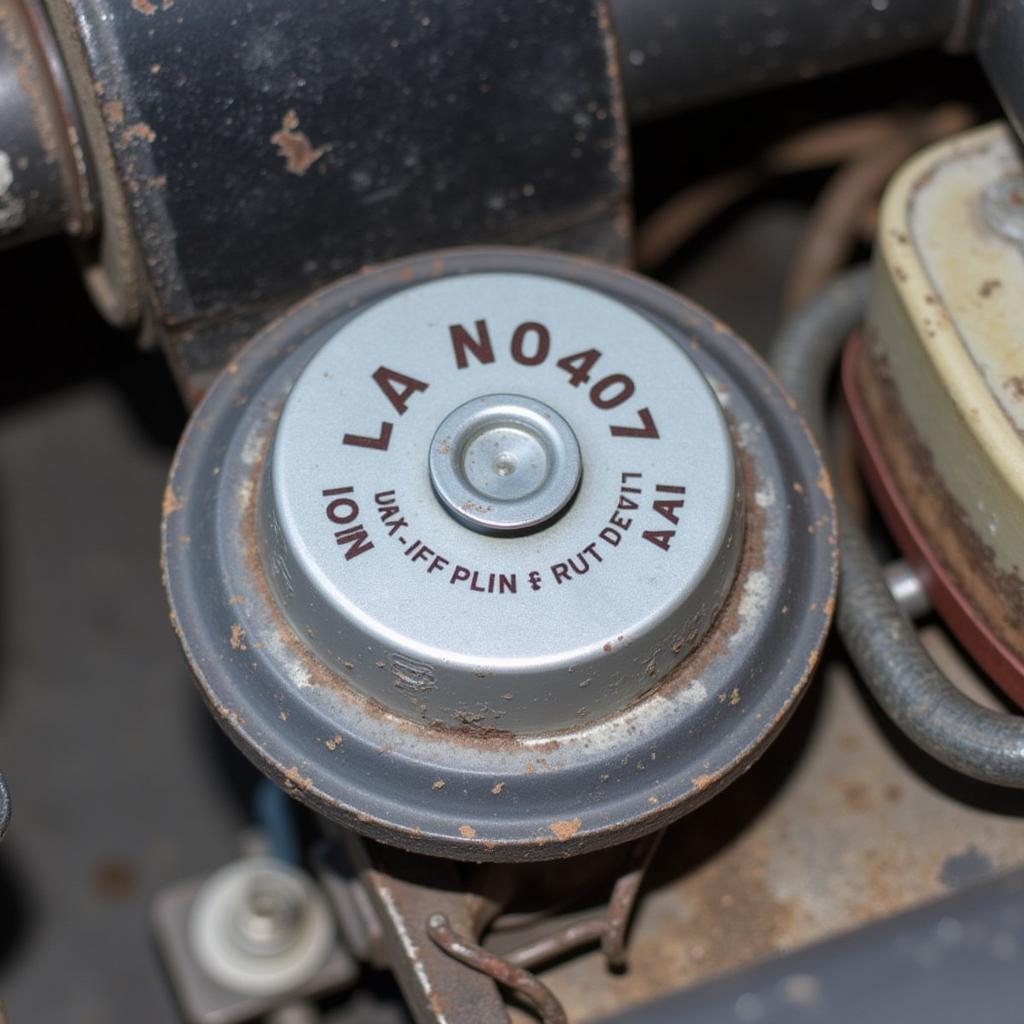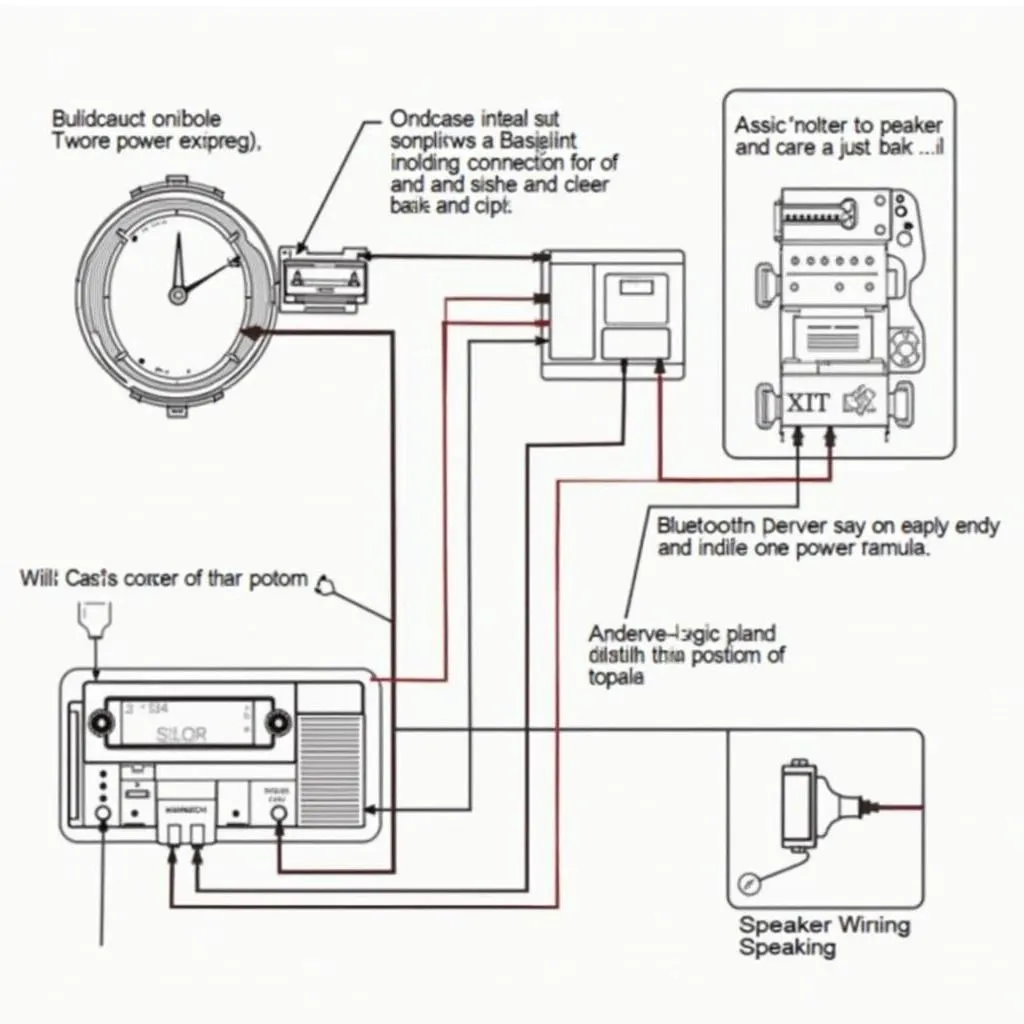Experiencing issues with your Ford F250’s passive anti-theft system? You’re not alone. Many Ford F250 owners encounter problems with this system, often leading to frustrating starting issues. This guide will walk you through the process of understanding, identifying, and resolving common problems associated with the passive anti-theft system in your Ford F250.
Understanding Your Ford F250’s Passive Anti-theft System
The passive anti-theft system, also known as the immobilizer system, is an electronic security feature designed to deter theft. It works by preventing the engine from starting unless the correct key is present. The system utilizes a transponder chip embedded within your Ford F250’s key that communicates with the vehicle’s onboard computer. When you insert the key or are in proximity for keyless entry, the transponder chip sends a unique code to the vehicle’s computer. If the code is recognized, the system disengages, allowing the engine to start.
A malfunctioning passive anti-theft system can disrupt this communication process, leading to starting problems.
Identifying a Passive Anti-theft System Problem
Common signs of a problematic passive anti-theft system include:
- Engine Cranks but Doesn’t Start: This is often the most telling sign. Your engine may turn over, but it won’t fire up because the anti-theft system is preventing fuel delivery or spark.
- Rapid Flashing Security Light: If you notice the security or theft light on your dashboard flashing quickly, it typically indicates a problem with the passive anti-theft system.
- Key Not Recognized: In vehicles equipped with keyless entry, the system may not recognize the presence of the key, preventing the vehicle from unlocking or starting.
Gathering Necessary Tools and Equipment
Before attempting to diagnose or fix the issue, it’s helpful to have the following items:
- Code Reader: A code reader or scanner allows you to read diagnostic trouble codes stored in your F250’s computer, which can pinpoint the source of the problem.
- Owner’s Manual: Your owner’s manual is an invaluable resource for understanding the specifics of your vehicle’s anti-theft system and any troubleshooting procedures.
- Spare Key: Trying a spare key can help determine if the problem lies with the key itself or the vehicle’s system.
Troubleshooting and Solutions
Here’s a step-by-step guide to help you address the problem:
-
Check Your Key: Examine your key for damage or excessive wear. If possible, try a spare key to rule out a faulty key.
-
Inspect the Battery: Ensure your F250’s battery is fully charged. A weak battery can disrupt the anti-theft system’s operation.
-
Check for Loose Connections: Inspect the wiring and connections around the ignition switch, battery terminals, and the anti-theft system’s components for any looseness or corrosion.
-
Resetting the System: Sometimes, a simple reset can resolve the issue. Consult your owner’s manual for the specific reset procedure for your F250’s model year. It often involves steps like leaving the key in the “ON” position for a certain duration or disconnecting the battery for a few minutes.
-
Utilize a Code Reader: Connect a code reader to your F250’s diagnostic port to retrieve any stored trouble codes. These codes provide valuable insights into the specific fault within the system.
-
Seek Professional Help: If the problem persists despite your troubleshooting efforts, it’s recommended to seek assistance from a qualified automotive electrician or a Ford dealership. They have the expertise and specialized tools to diagnose and repair complex anti-theft system issues.
Frequently Asked Questions
Q: Can I bypass the passive anti-theft system on my Ford F250?
A: Bypassing the passive anti-theft system is strongly discouraged. Doing so not only compromises your vehicle’s security but can also lead to further electrical problems and potentially void your warranty.
Q: How much does it cost to fix a Ford F250 passive anti-theft system issue?
A: The cost of repair can vary depending on the root cause and the complexity of the repair. Simple fixes like a key replacement or battery replacement are on the lower end of the spectrum, while issues requiring module replacement or specialized programming can be more expensive.
Q: Can aftermarket remote starters interfere with the passive anti-theft system?
A: Yes, sometimes aftermarket installations, particularly remote starters, can create conflicts with the factory anti-theft system if not installed properly. Always ensure that any aftermarket installations are done by a qualified professional.
For in-depth information on Ford F250 anti-theft systems, you can visit Does 2001 Ford F250 have anti theft? and How To Bypass 2009 Ford F250 Anti Theft System.
Conclusion
Dealing with a malfunctioning passive anti-theft system can be a headache, but understanding how the system works and following these troubleshooting tips can get you back on the road. Remember, if you’re uncertain about any step or encounter persistent problems, it’s always best to consult with the experts at CARDIAGTECH for professional diagnostics and solutions tailored to your Ford F250.


